 Royal Navy Broadside Ironclads: HMS Hector, HMS Valiant 1861–1864, service until 1956
Royal Navy Broadside Ironclads: HMS Hector, HMS Valiant 1861–1864, service until 1956
The Hector-class ironclads were armoured frigates (single battery deck like most ironclads of the time except the Magenta)
Thes ironclads, like their immediate predecessors, the Defence class, were designed as smaller and cheaper versions of the Warrior-class armoured frigates but were modified versions of the Defence, with additional armour and more powerful engines.
They entered the Royal Navy service in the 1860s. Hector was completed in 1864, went to the Channel Fleet until refit in 1867. Valiant’s builder went bankrupt, and she had to be delayed for six years to receive her guns and be commissioned. Both ended in Reserve Fleet from 1868 until they were paid off in 1885–1886. Apart a recommisson in the Russo-Turkish War of 1877–1878, they saw no action and were hulked in the late 1890s, assigned to shore establishments. Hector was scrapped in 1905, Valiant converted into a floating oil tank in 1926, sold for scrap thirty years later.
Development
The Hector class ironclads (Hector and Valiant) were armoured frigates similar to Defence but with increased protection, speed and armament, the beam being increased to compensate for the added top weight. The battery armour extended the full length of the ship, 42 in for 216 ft amidships and 23 in at the ends, providing partial protection to the steering gear. Armour bulkheads were fitted across the end of the waterline belt only, the waterline at the bow and stern still being unprotected. They had straight stems with no ram, and a rounded stern unpierced except by gunports. The hull was divided into 92 watertight compartments, 52 being in the partial double bottom and the wings.

Semi-hull form at the Greenwhich coll.
As completed, Hector was seriously overweight and the coal capacity and the armament of both ships was reduced to compensate for this. Valiant’s original builders, Westwood & Baillie of Millwall, became bankrupt and her construction was taken over in 1861 by the Thames Iron Wks. This and the decision to rearm her with MLR guns resulted in extensive delay to her completion. Hector’s machinery was manufactured by her builder, and Valiants by Maudslay. The coal capacity of 450 tons gave an endurance of 1600 miles. Both vessels had lifting screws, but lifting tackle was not fitted.
Their designed armament was twenty four 68pdr SB but Hector was completed with four 7-in BL on the upper deck and twenty 68pdr SB on the battery deck.
Hector was rearmed in 1867/8 and Valiant was completed with the armament shown above, twelve 7in being mounted on the battery deck and the remainder on the upper deck.
These vessels were barque-rigged, and had a sail area of 24,500 sq ft. They rolled badly but manouvered well. Their sea-going service ended in the 1885/6. Hector became part of the Vernon torpedo school in 1900 and was the first ship fitted with a wireless transmitter. Valiant was employed harbour service, being renamed indus in in 1898, Valiant (Old) in 1916, and Valiant III in 1919. In 1924 she was converted into a floating oil tank until BU at last in 1957.
Design of the class
Hull and general design

Brassey’s rendition of her hull and armour
The Hector class were 280 feet 2 inches (85.4 m) long (between perpendiculars), for a beam of 56 feet 5 inches (17.2 m), draft of 26 feet 2 inches (8 m). They ended 300 long tons (300 t) overweight with a displacement at 7,000 long tons (7,100 t) in the end. The hull was subdivided into watertight transverse bulkheads creating 92 compartments plus having a double bottom limited to under the engine and boiler rooms. They had a very low centre of gravity with a metacentric height of 4 feet 6 inches (1.4 m) and thus, rolled quite badly, albeit not danerously. They always righted up in a sane way. Their crew was intensive between the artillery and rigging, with 530 officers and ratings. Unlike the Defence class, the bow was not in half-moon but almost straight and the poop had less overhang. The foremast started from the upper deck, not a cutout like on the previous defence. Single funnel, but the rigging was somewhat reduced in height also compared to the Defence class.
Powerplant

Messers Maudlslay 800 hp HRCR engine for HMS Valiant
Hector and Valiant were powered by a single, 2-cylinder horizontal return connecting-rod (HRCR) steam engine. It was driving a single 18-foot (5.5 m) propeller (able to be hoisted up). This powerplant was fed by six boilers at a working pressure of 22–25 psi (152–172 kPa; 2–2 kgf/cm2). Total output was 3,256–3,560 indicated horsepower (2,428–2,655 kW) respectively on Hector or Valiant. In sea trials on 23 February 1864, Hector reached 12.36 knots (22.89 km/h; 14.22 mph), Valiant reached 12.65 knots (23.43 km/h; 14.56 mph) on 18 September 1865. They were given 450 long tons (460 t) of coal to compensate of being overweight and could still cross 800 nautical miles (1,500 km; 920 mi) at full speed if needed.
As frigates, they were barque-rigged with a sail area of 24,500 square feet (2,276 m2). Like previous ships, when udner sails, the funnel was semi-retractable to reduce wind resistance. Their hoisted up propeller into the stern (poop cutout overhang) helped reduce drag under sail, but the hoisting gear was never fitted and the poop cutout plated over.
Protection
The Hector-class being ironclads, they were given wrought iron plating at the waterline. Here are the characteristics:
-Armour belt: 4.5 inches (114 mm) thick, over 216 feet (65.8 m) amidships, 5 feet 8 inches (1.7 m) below waterline
-Bow and stern unprotected.
-4.5-inch transverse bulkheads at each end, lower deck level.
-Main deck protected by a armour on the full length, 4.5-inch thick amidship over 216 feet tapered to 2.5 inches (64 mm) at both ends
-Main belt backed by 18 inches (460 mm) of teak.
-Unprotected steering gear.
Armament
The Hector-class were planned, as previous ships, as carrying 32 smoothbore, muzzle-loading 68-pounder guns. These 15 on each side, main battery deck, one each fore and aft as chase guns, upper deck.
-Hector was modified in construction to receive instead four rifled 110-pounder breech-loading guns (BLR) on the upper deck with the initially planned 68-pounders now reduced to twenty-four, twelve per broadside.
-Valiant was delayed so much, that combined with a shortage of guns, never received any.
Instead Armstrong proposed its newly developed breech-loading guns, with great hoped in them. Eventually she could received first the final two 8-in MLR and sixteen 7-in MLR hse sister was rearmed with later.
Being overweight they never indeed received the full complement assigned to them, four 110-pounders on the upper deck, twenty 68-pounders on the main deck. September 1861 firing tests proved the 110-pounder inferior to the 68-pounder smoothbore gun in raw armour penetration. Plus being that early, they suffered from a poor reliability and dangerousness, with many breech explosions as shown in the Battles for Shimonoseki and Bombardment of Kagoshima in 1863–64. These were withdraw from service.
4x 110 Pounders
The four 7.9-inch (201 mm) were istalled on the upper deck as chase guns. They fired the same solid shot of the 68-pounder gun (68 pounds (30.8 kg) hence the name. These smoothbore muzzle loading guns weighed 10,640 pounds (4,826 kg) and muzzle velocity was 1,579 ft/s (481 m/s) for a range of 3,200 yards (2,900 m) at 12°.
24x 68-Pounders
The main battery comprised twelve smoothbore muzzle loaders per broadside, so twenty four total, a far cry of their original battery. These shells were the same as for the 110-pounder Armstrong breech-loader and weighed 107–110 pounds (48.5–49.9 kg). Muzzle velocity was 1,150 ft/s (350 m/s) which for an elevation of 11.25°, gave a maximum range of 4,000 yards (3,700 m). These weighed 9,520 pounds (4,318.2 kg) and could fire both solid shot and explosive shells if needed, the new trend.
1867-68 Refit
Hector was rearmed first in 1867–1868, with sixteen 7-inch and two 8-inch (203 mm) rifled muzzle-loading guns (RML).
Valiant had the same from the start.
The two 8-inch guns were on the quarterdeck, operable in all weathers. Four 7-inch guns were also fitted on the upper deck. The remaining twelve 7-inch guns were in the main battery deck.
The 15-calibre, 9 long tons (9.1 t) 8-inch guns fired 175 pounds (79.4 kg) shells, at a muzzle velocity of 1,410 ft/s (430 m/s) so able to penetrate 9.6 inches (244 mm) of wrought iron armour.
The 16-calibre 7-inch gun weighed 6.5 long tons (6.6 t), fired a 112 pounds (50.8 kg) shell which could defeat 7.7-inch (196 mm) of armour.
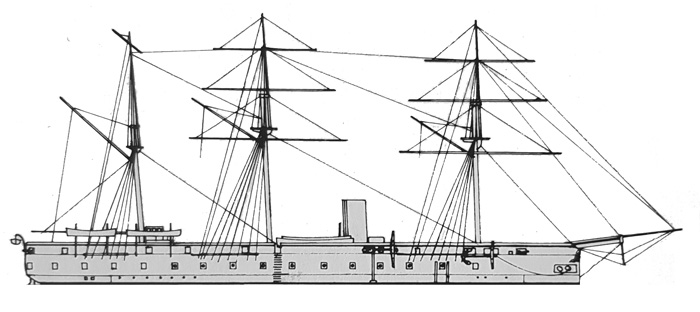
⚙ specifications |
|
| Displacement | 7,000 long tons (7,100 t) |
| Dimensions | 280 ft 2 in x 56 ft 5 in x 26 ft 2 in (85.4 x 17.2 x 8 m) |
| Propulsion | 1 shaft HRCR Steam Engine, 6 boilers 3,260–3,560 ihp (2,430–2,650 kW) |
| Sail plan | Barque-rig |
| Speed | 12 knots (22 km/h; 14 mph) |
| Range | 800 nmi (1,500 km; 920 mi) at 12 knots (22 km/h; 14 mph) |
| Armament | 4× 110 pdr (7 in) RBL guns, 20 × 68-pdr SB guns |
| Armament* | 16 × 7 in RML guns, 2×8 in (203 mm) RMLs |
| Protection | Belt: 2.5–4.5 in (64–114 mm), Bulkheads: 4.5 in (114 mm) |
| Crew | 530 |
Career of the Hector class
 HMS Hector
HMS Hector
 HMS Hector wa slaid down at Robert Napier and Sons, Govan in March 1861, launched on 26 September 1862. She was completed and commissioned from 22 February 1864 at a cost of £294,000. This included £35,000 to her builders which underestimated their costs. She was assigned to the Channel Fleet until 1867, then was paid off, re-armed and refitted.
HMS Hector wa slaid down at Robert Napier and Sons, Govan in March 1861, launched on 26 September 1862. She was completed and commissioned from 22 February 1864 at a cost of £294,000. This included £35,000 to her builders which underestimated their costs. She was assigned to the Channel Fleet until 1867, then was paid off, re-armed and refitted.
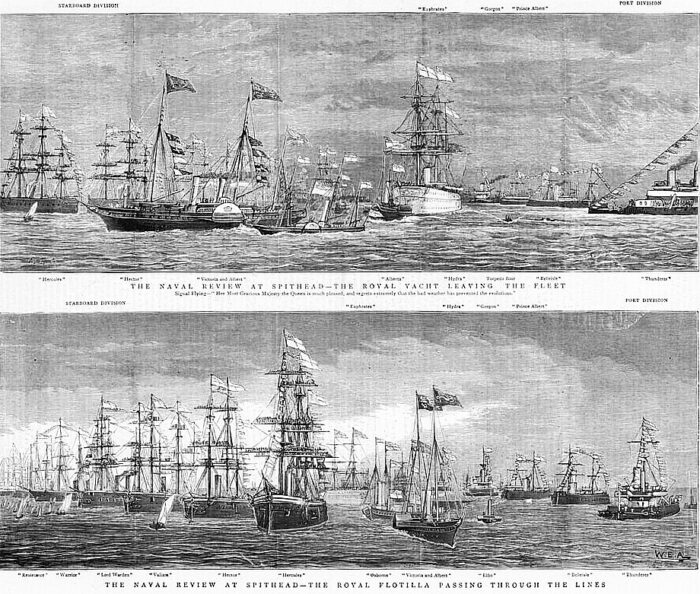
Hector featured at the Naval Review at Spithead in 1878. The Graphic
Hector formed part of the Southern Reserve Fleet between 1868 until 1886. Her only active sortie was in the Particular Service Squadron under command of Admiral Hornsby during the “Russian war scare” in June–August 1878. She was assigned as Queen Victoria’s guard ship every summer at the time when the Queen, and family resided in Osborne House, Isle of Wight. She was paid off at Portsmouth in 1886 and remained partly dismantled until 1900, reactivated for torpedo school HMS Vernon, as a store hulk. She experimented the first wireless telegraphy for very early trials for the Royal Navy. She was sold for scrap in 1905.
 HMS Valiant
HMS Valiant
HMS Valiant was laid down at Westwood, Baillie, Cubitt Town and Thames Ironworks, Blackwall, London in February 1861. She was launched on 14 October 1863 after the companies went bankrupt (November 1861), completed at last by Thames Ironworks, after the yard’s purchase, and after rearmament, by 15 September 1868 for £325,000. In August 1865 she was towed to Portsmouth for fitting out and inspected by French officers during a port visit by French Ironcads. Production of the new muzzle-loaded rifles was slow and since she was lower in priority, full commission was not before September 1868, five years after launch, very unusual for British practices.
After commission she entered the First Reserve guard ship, Southern Ireland, and remained there until 1885, having in between new boilers installed. She took part still at the Naval Review at Spithead in 1878. From June to August 1878 her service in the Particular Service Squadron was due to the Russian war scare and Russo-Turkish War of 1877–1878. She sailed to the Dardanelles under command of Admiral Hornby.
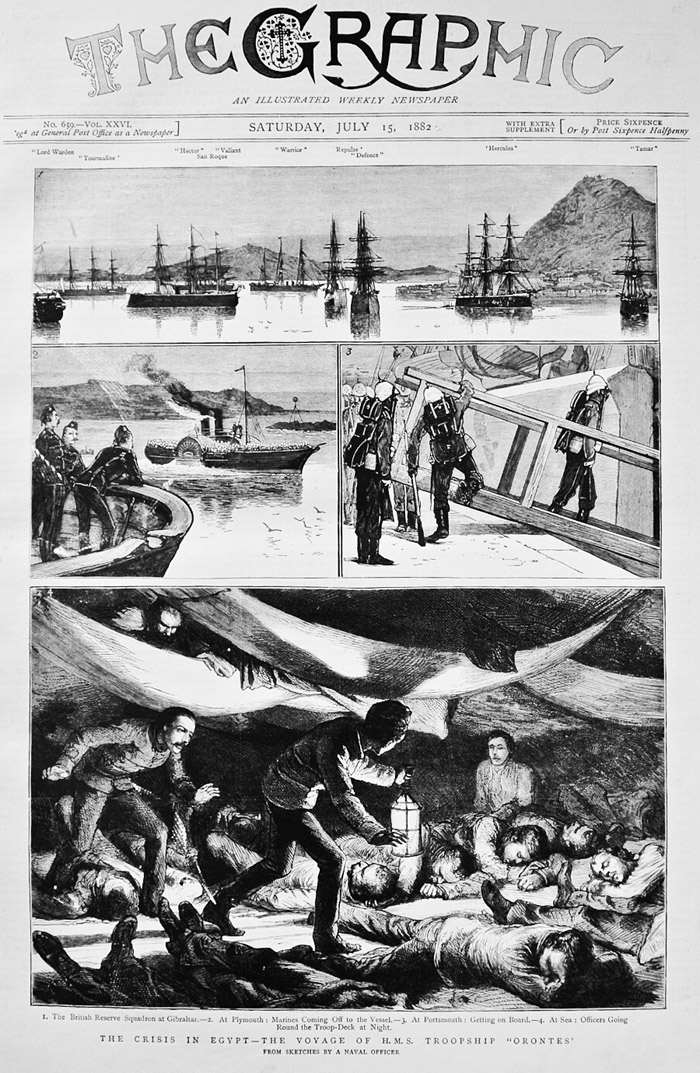
Valiant in Egypt. The Graphic 1882
On 20 July 1884, HMS Valiant was accidentally rammed by HMS Defence in Lough Swilly. Her hull was badly damaged, loosing plating, but her teak backing remained unaffected. This also teared off her boats, davits and fittings. It was deemed uneconomical to have her repaired and she was paid off in 1885, being laid up for 13 years, partially dismantled, in Devonport. In 1897 she was assigned to the stoker training establishment HMS Indus, being later renamed Indus IV in 1904. She was then was converted to a kite balloon storeship in 1915. In World War I she as renamed again HMS Valiant III. Postwar in 1922 she was offered for sale but there were no takers so the Navy had her converted into a floating oil tank in 1926. She was towed to Hamoaze, remaining there until 1956. She was sold to Belgian ship breakers that year, towed to Bruges on 8 December to be scrapped.
Read More/Src
Books
Ballard, G. A., Admiral (1980). The Black Battlefleet. Annapolis, Maryland: Naval Institute Press.-3.
Chesneau, Roger & Kolesnik, Eugene M., eds. (1979). Conway’s All the World’s Fighting Ships 1860–1905. Greenwich, UK: Conway Maritime Press.
Lambert, Andrew (1987). Warrior: Restoring the World’s First Ironclad. London: Conway.
Parkes, Oscar (1990). British Battleships (reprint of the 1957 ed.). Annapolis, Maryland: Naval Institute Press.
Silverstone, Paul H. (1984). Directory of the World’s Capital Ships. New York: Hippocrene Books.
Links
rmg.co.uk/ greenwhich coll
pdavis.nl/
navypedia.org/
en.wikipedia.org Hector-class_ironclad
Videos
Model Kits
HMS “Hector” 1861 Royal Navy Armored Frigate Armo | No. 700-57 | 1:700


 Latest Facebook Entry -
Latest Facebook Entry -  X(Tweeter) Naval Encyclopedia's deck archive
X(Tweeter) Naval Encyclopedia's deck archive Instagram (@navalencyc)
Instagram (@navalencyc)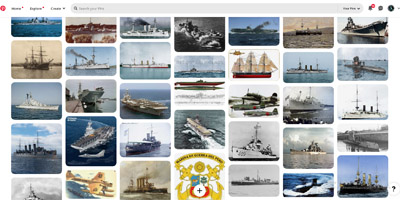


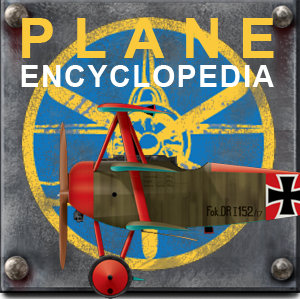
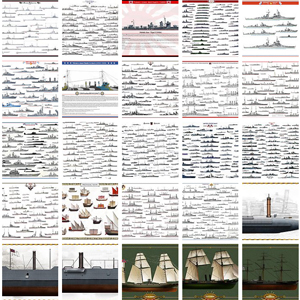

 French Navy
French Navy Royal Navy
Royal Navy Russian Navy
Russian Navy Armada Espanola
Armada Espanola Austrian Navy
Austrian Navy K.u.K. Kriegsmarine
K.u.K. Kriegsmarine Dansk Marine
Dansk Marine Nautiko Hellenon
Nautiko Hellenon Koninklije Marine 1870
Koninklije Marine 1870 Marinha do Brasil
Marinha do Brasil Osmanlı Donanması
Osmanlı Donanması Marina Do Peru
Marina Do Peru Marinha do Portugal
Marinha do Portugal Regia Marina 1870
Regia Marina 1870 Nihhon Kaigun 1870
Nihhon Kaigun 1870 Preußische Marine 1870
Preußische Marine 1870 Russkiy Flot 1870
Russkiy Flot 1870 Svenska marinen
Svenska marinen Søværnet
Søværnet Union Navy
Union Navy Confederate Navy
Confederate Navy Armada de Argentina
Armada de Argentina Imperial Chinese Navy
Imperial Chinese Navy Marinha do Portugal
Marinha do Portugal Mexico
Mexico Kaiserliche Marine
Kaiserliche Marine 1898 US Navy
1898 US Navy Sovietskiy Flot
Sovietskiy Flot Royal Canadian Navy
Royal Canadian Navy Royal Australian Navy
Royal Australian Navy RNZN Fleet
RNZN Fleet Chinese Navy 1937
Chinese Navy 1937 Kriegsmarine
Kriegsmarine Chilean Navy
Chilean Navy Danish Navy
Danish Navy Finnish Navy
Finnish Navy Hellenic Navy
Hellenic Navy Polish Navy
Polish Navy Romanian Navy
Romanian Navy Turkish Navy
Turkish Navy Royal Yugoslav Navy
Royal Yugoslav Navy Royal Thai Navy
Royal Thai Navy Minor Navies
Minor Navies Albania
Albania Austria
Austria Belgium
Belgium Columbia
Columbia Costa Rica
Costa Rica Cuba
Cuba Czechoslovakia
Czechoslovakia Dominican Republic
Dominican Republic Haiti
Haiti Hungary
Hungary Honduras
Honduras Estonia
Estonia Iceland
Iceland Eire
Eire Equador
Equador Iran
Iran Iraq
Iraq Latvia
Latvia Liberia
Liberia Lithuania
Lithuania Mandchukuo
Mandchukuo Morocco
Morocco Nicaragua
Nicaragua Persia
Persia San Salvador
San Salvador Sarawak
Sarawak Uruguay
Uruguay Venezuela
Venezuela Zanzibar
Zanzibar Warsaw Pact Navies
Warsaw Pact Navies Bulgaria
Bulgaria Hungary
Hungary

 Bundesmarine
Bundesmarine Dutch Navy
Dutch Navy Hellenic Navy
Hellenic Navy Marina Militare
Marina Militare Yugoslav Navy
Yugoslav Navy Chinese Navy
Chinese Navy Indian Navy
Indian Navy Indonesian Navy
Indonesian Navy JMSDF
JMSDF North Korean Navy
North Korean Navy Pakistani Navy
Pakistani Navy Philippines Navy
Philippines Navy ROKN
ROKN Rep. of Singapore Navy
Rep. of Singapore Navy Taiwanese Navy
Taiwanese Navy IDF Navy
IDF Navy Saudi Navy
Saudi Navy Royal New Zealand Navy
Royal New Zealand Navy Egyptian Navy
Egyptian Navy South African Navy
South African Navy






























 Ukrainian Navy
Ukrainian Navy dbodesign
dbodesign